Tree Planting
- Home
- Tree Planting
Tree Planting
Friendly Tree Service has been planting large specimen trees in New Jersey for 27 years. We take the time to select the most appropriate specimens for your NJ Landscape. We hand pick the trees from our growers from around the country. We source the material, deliver it to your site and expertly plant the tree. We take the time to amend the soil as part of establishing a planting bed for the new tree. We seat the tree, balance and support it as well as mulch the new bed for long term success of the tree. If any pruning or loose shaping is in order that is included in our service offering. We offer not just a survival guarantee but a thrive guarantee!
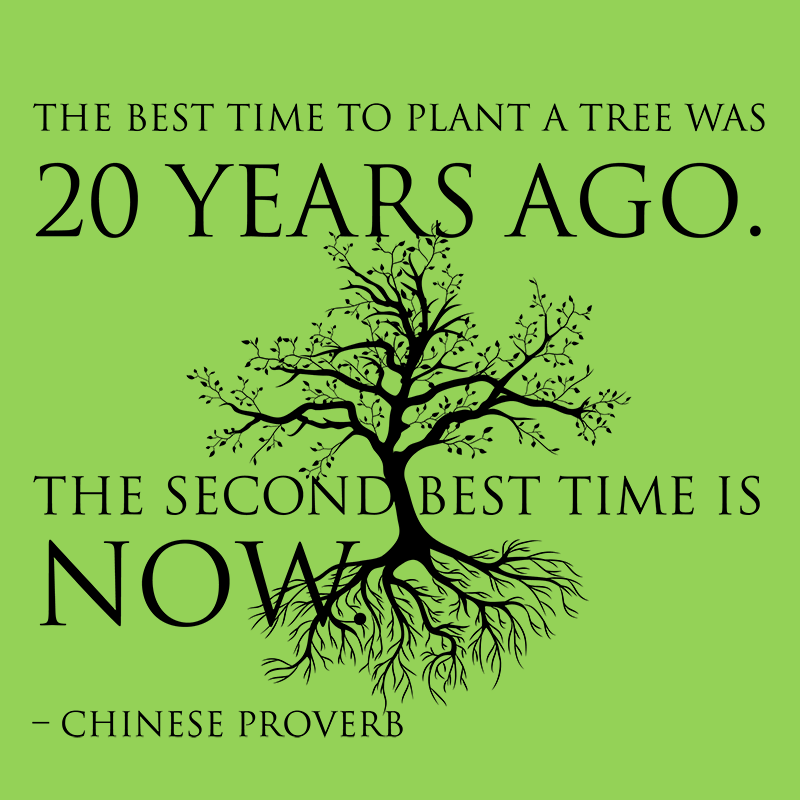
Top 10 Mistakes made when planting a tree
Homeowners and landscapers alike make these mistakes every day!
1) Tree Placement. Different trees have different needs. Amount of sun, proximity to other trees and structures as well area needed for proper root growth. Friendly Tree can assist you with choosing the correct type of tree for the spot you have in mind. If the spot is not appropriate for what you want we can advise as to the best placement not just for the new tree to survive but to thrive. Often a good tree can go wrong quickly if placed too close to a house or overhead wires. Proper placement is key to health but also aids the tree to grow naturally requiring less pruning and maintenance. Put the right tree in the right place the first time will save you money short and long term.
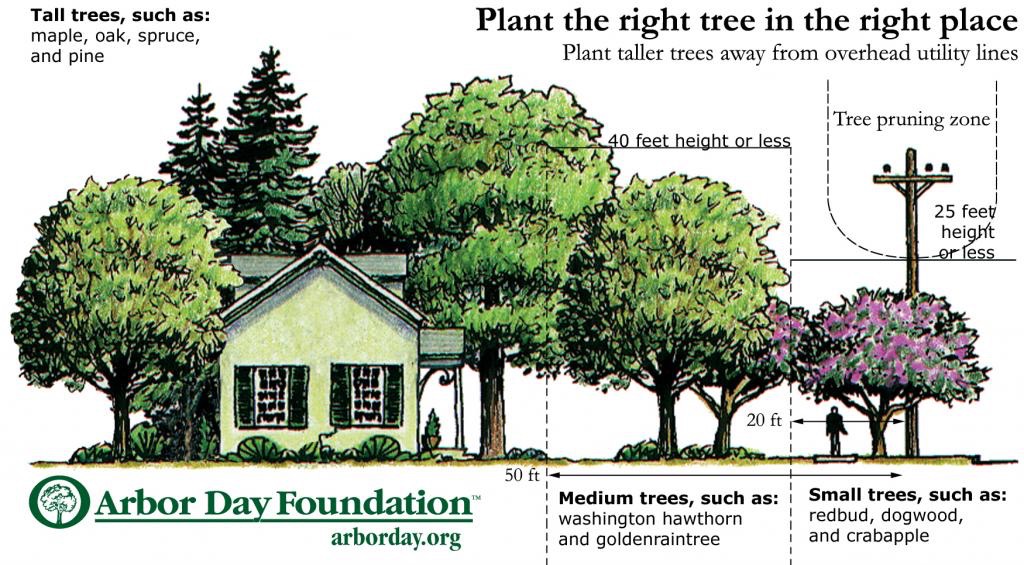
2) Condition of tree (in the garden center or tree nursery). Many homeowners will take what is offered by a garden center not knowing what to look for in a well established healthy tree with correct scaffolding limbs, no marring of the bark and an appropriate sized root ball for the size of the tree. As arborists we can advise you on which tree to select and educate you as to why one is better than another. Tree size and canopy splay and balance play into the condition and long term success of a tree. Size doesn’t always matter. Proper metered balanced growth and a good structure is way more valuable than a big tree with issues.
3) Local soil chemistry versus the native soil chemistry on the new tree. Your soil may be very different from the chemistry of the soil where the tree has been grown for many years. A basic soil assay will determine what soil amendments are needed to assist in an easy acclimation period. Once the trees chemistry is correct it will not just survive but thrive. Our goal is to get the right trees in the right placement with the most appropriate soil amendments for long term success. Planting trees is an investment and like your other investments you expect dividends. A successful, healthy vigorous tree!
4) Handling of trees prior to planting. Trees are often grown in fields and when ready for sale they are hand dug or machine dug and the root ball is contained in burlap (often referred to as B&B), placed in plastic or wooden containers , wire , rope or metal cages to hold the roots and soil together for shipping and planting. Even expert digging and wrapping of trees is stressful (roots are cut). It is essential that the tree and root ball not be dropped or damaged in any way as the roots will be damaged and can cause a girdling root structure (roots wrap and choke themselves) as well as a myriad of fungal and bacterial issues.
5) Proper planting methods. Generally homeowners and many landscapers alike do not dig a large enough hole for the tree and root ball to settle into. If the soil is too compact the root zone will be under stress and the soft tissue roots will have a difficult time breaking out of the ball and anchoring into the soil. Soil preparation, adding organic matter and mulching are critical to the trees success. Cut and remove any rope, roll down burlap and remove metal cages from rootball once in the hole. If the cage cannot be removed totally cut and remove as much as possible to limit girdling roots etc. This is CRITICAL!
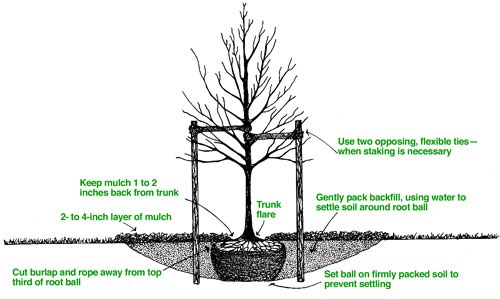
6) Improper mulching of the trees root zone. Way too often we see “Mulch Volcanoes” wherein there is mulch piled up around the trunk of the tree for several inches. Although mulch is very important to hold moisture, cool and feed the soil, maintain moisture etc. if it is piled up the trunk it stifles the gaseous exchange at the bark. This material buries the root collar, suffocates the roots and encourages deadly girdling roots. Fungal and bacterial issues will assist the tree to rot behind the shadow of the mulch.
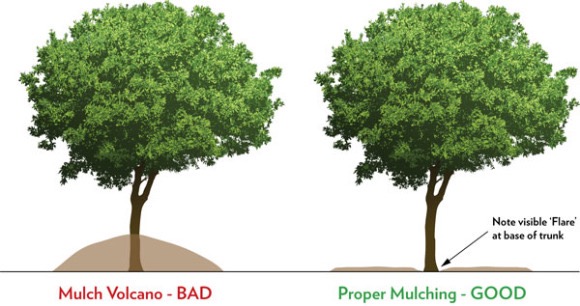
7) Improper watering of newly planted trees. Water is essential for not just OUR survival but to the survival of your newly planted tree. Too much water is as bad as too little water. As a rule of thumb your soil should be moist. Usually 30 seconds with a steady stream of water from a garden hose w/ a diffuser nozzle per tree seedling is sufficient. Mulching is also key in retaining moisture in the soil. You can check soil moisture by using a garden trowel and inserting it into the ground to a depth of 2″, and then move the blade of the trowel back and forth to create a small narrow trench. Then use your finger to touch the soil. If it is moist to the touch, watering is not necessary. Watering Trees After the First Two Years: After your tree has been established in your yard for two years the roots will be established. This will allow your tree to withstand a wider range of water conditions including on its own because it has a proper root structure.
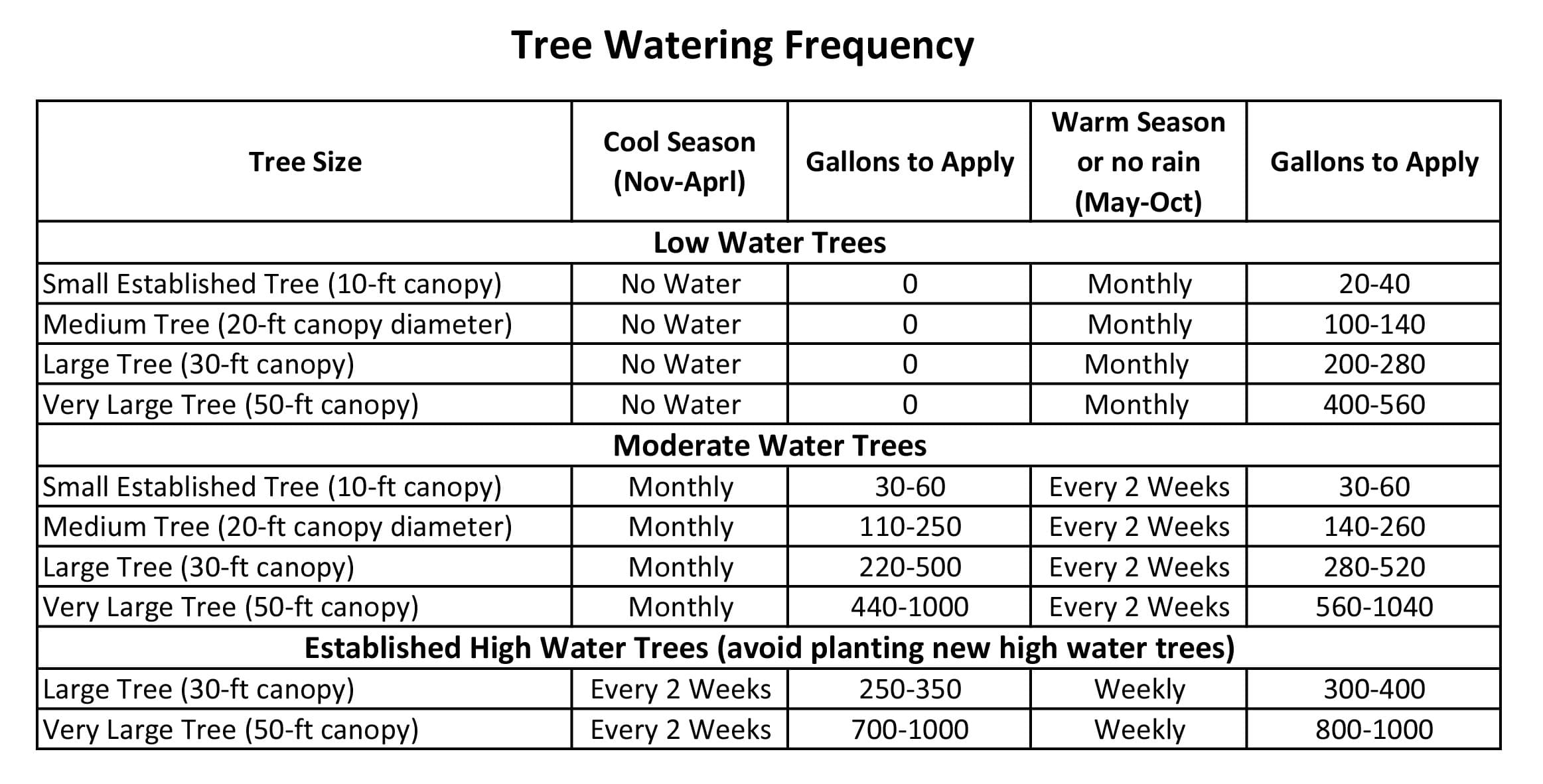
8) Over fertilizing newly planted trees. A high quality tree that has been selected for an appropriate spot in your landscape will not require anything more than high levels of organic matter in the planting area, water, mulch and sun. With proper planting methods and appropriate soil amendments (including mycorrhizae – beneficial fungi for root growth, nutrient absorption and strength) your new tree will require very little within the first two years. The trees go through a stressful acclimation period and the introduction of certain fertilizers will stress them even more by forcing them to over produce.
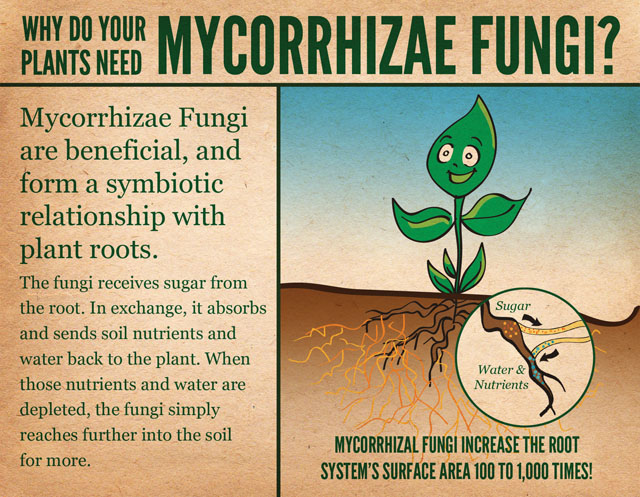
9) Crowding too many plants in a planting bed. Each tree and shrub planted in a bed are vying for limited amounts of bio available nutrients, root growth area and water. Each plant has different needs and it is easy with a bit of planning to have multiple types of trees, shrubs, perennials etc. in a single bed. Commonly homeowners and landscapers alike mix material of different needs and all of the material planted suffer. You must be educated in what plays well with other when establishing a new planting bed. The success of one tree could be the failure of a group of other material.
10) Planting at the wrong time of year. Climate plays a deciding role when determining the appropriate planting time. Newly planted trees do best when exposed to moderate temperature and rainfall. They need time to root and acclimatize before the onset of intense heat and dryness of summer or the freezing temperatures of winter. Spring and early fall, therefore, are generally the best planting seasons. Northern NJ especially with the weather patterns changing planning ahead is important to your new trees success. Many landscapers are limited in when they can schedule work and often don’t take into account the dry heat of summer being a stressful time to plant trees. It is possible to plant then but it comes at a cost of additional watering, possible phototoxic burn (sun burn on leaves) and other weather related stresses. We have successfully planted trees in the dead of winter and the heat of summer but as a rule of thumb milder temperatures of Spring and Fall are the least stressful times to plant for a healthy, vigorous, successful new tree in your New Jersey landscape.



